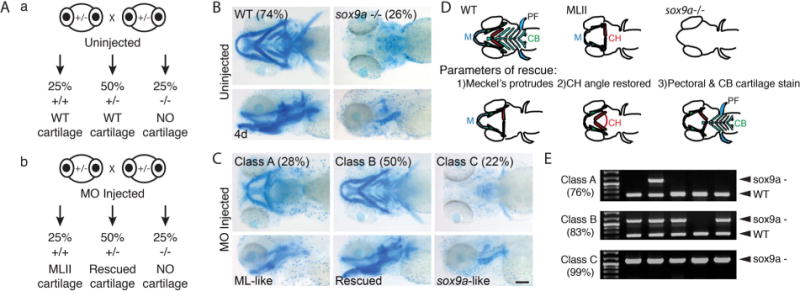Fig. 3.

Reduced sox9a improves MLII phenotypes in zebrafish. (A) Schematic outlines the expected craniofacial phenotype in: (a) uninjected and (b) gnptab MO-injected sox9a (+/−) incross progeny. (B) Alcian blue–stained uninjected sox9a (+/−) incross progeny. (C) Alcian blue–stained MO-injected progeny, where Class A embryos (predicted to be sox9a +/+) contain ML-like cartilage, Class B embryos (predicted to be sox9a +/−) contain WT-like “rescued” cartilage, and Class C embryos (predicted to be sox9a−/−) resemble sox9a mutants. Percent values equal the number of embryos within each phenotypic class; n > 300; scale bar = 100 μm. (D) Schematic summarizing cartilage phenotypes in WT, MLII, and sox9a/embryos (top row) and the 3 parameters used to assess phenotypic rescue (bottom row).(15) M = Meckel’s; CH = ceratohyal; CB = ceratobrachials; PF = pectoral fin. (E) Representative PCR of single embryo genotyping for animals within each phenotypic class. Percent value represents number of embryos within the class positive for the expected genotype. n = 50–75 embryos/condition; scale bar = 100 μm.
